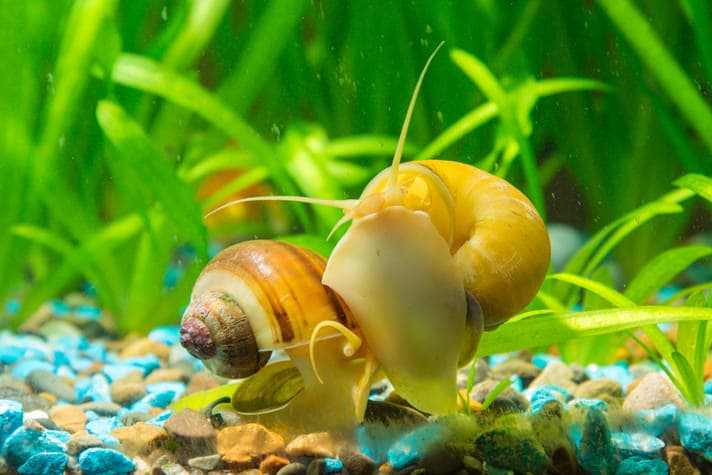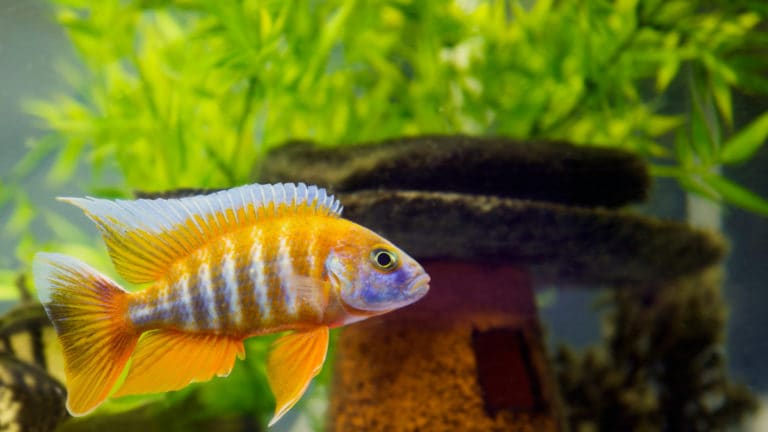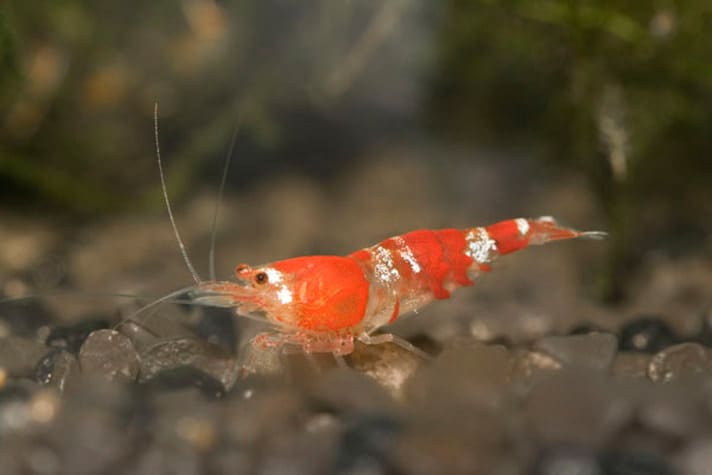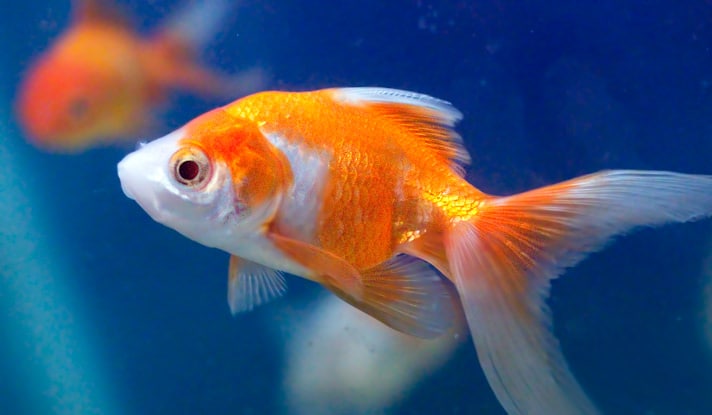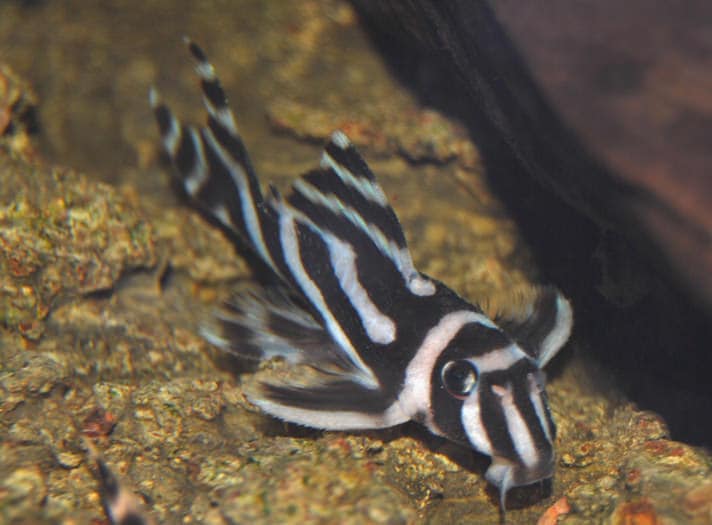At one point or another, every aquarist has experienced an unexpected outbreak of snails in their home fish aquarium. It can be incredibly frightening, too. There are these small little animals in tremendous numbers that have seemingly appeared overnight, and you did not put them in the aquarium. Where did they come from?
The most common culprit for this sudden phenomenon is the Malaysian Trumpet Snail. This small snail is shaped like a cone (or, y’know. . . a trumpet) and can rapidly reproduce, with a single female giving birth to hundreds of miniature snails. Like Tribbles, they’re seemingly born pregnant and begin reproducing very quickly. The Malaysian Trumpet Snail, or MTS, is nocturnal and lives burrowed in the gravel, meaning that you generally don’t see them. Then, one morning you get up early and glance at the tank, only to see the last stragglers heading for their gravel bed (Pun Alert) — the last ones numbering in the hundreds. More frightening, some aquarists have reported that their gravel appears to move and writhe on its own, all from snails.
Snails are incredibly resilient creatures. A story that circulates of an aquarist who actually attempted to rid an aquarium of MTS by bleaching it. The snails survived. They can handle low temperatures, warm temperatures, foul water, medications, salt, and even survive without water for a good time. They’re tough. Ridding the aquarium of them, similarly, can be very tough.
There’s an old adage about an ounce of prevention being worth a pound of cure. Snails are not able to teleport, nor do they spontaneously arise from the ether. If you have snails in your tank, you put them in there. The most common means is through adding live plants. Snails, or their eggs, can hitch on most types of plants and arrive in your home aquarium. Old time aquarists recommend soaking aquarium plants in a solution of 2-3 teaspoons of alum dissolved in a quart of water. After 2-3 days in this solution, all snails and eggs should be gone. A stronger solution, substituting tablespoons for teaspoons, will do the same in a few hours. However, alum can be harsh on plants, particularly fine leaf plants, and caution must be used when dipping plants. If soaking the plants for several days, remember that they do need light.
Nowadays, many aquarists have begun using a bleach solution. Plain, straight forward bleach—without any fragrances or in a “no-spill” formula — is mixed one part to 20 parts of water. The plants are dipped in here for a few minutes, then immediately placed in a second container of water and gently rinsed, with the addition of a lot of dechlorinator. The rinsing must remove all bleach residue. This will kill all hitch hikers on the plants, and probably also kill the plants. (And, of course, use caution when using bleach, don’t spill it, don’t inhale it, wear gloves, be careful!).
Better yet, the plants can be placed in a separate quarantine fish tank and observed for several weeks. Any snails that appear are picked off and crushed. This has the added benefit of giving the aquarist an opportunity to be rid of other pesky hitch hikers, including duckweed, insects, etc. However, if you miss a snail or two on your quarantined plants.
Controlling the snails once they get into the aquarium can be difficult. The gut reaction of many of us is to try a snailacide, the most popular of which are copper containing chemicals. These will kill some plants – beware! They will also kill every invertebrate in the tank. Some snails, such as the MTS, will also watch you pour this chemical into the tank and then resume their daily business while laughing at you. I don’t know how snails laugh, I only know that they do. It won’t harm them.
There is a major downside to using a chemical in the aquarium to kill all your snails, though. Each and every snail is a living organism and, as Kings and Beggars do, it will rot. Imagine them not as snails, but guppies. Imagine 10,000 dead guppies in your tank. This is a problem. Yet, aquarists often forget that snails leave behind small carcasses, which will greatly foul the water. I therefore recommend that chemical use be done, if at all, only after snail populations have been brought under control.
Many aquarists have begun using traps. My good friend Eric Bodrock of All Odd Ball Aquatics sells a really great snail trap. Many aquarists have great luck in simply placing a piece of bait – such as a small piece of blanched zucchini – inside of a submerged soda bottle. The snails will enter, the bottle is removed and placed in the freezer for a few days. If this is repeated regularly, the population of snails can be greatly reduced.
Once brought under control, the snail population, however, will rapidly resume its old levels unless the root problem is addressed. Simply put, snails eat, and if there are a lot of them, there must be a lot of something for them to eat. Overfeeding the fish can lead to heavy populations of MTS. Too much algae growth, from too much light or too much fish food, can lead to other snail problems. In a planted tank, this may indicate that there aren’t enough plants, or too much fertilizer is being used. Find the reason why there are so many snails first, and then begin to remove the snails.
One of the age old pieces of advice for controlling snail populations in the tank is to add a clown loach. This is up there with bleaching the live plants to prevent snails for dumb things to do. Sure, it works, but it has major drawbacks. The clown loach is a great snail eater, and its natural diet consists of these and other invertebrates. They’re also rather pretty fish. But, they’re — first and foremost — a schooling fish. Adding one to control snails is a cruel fate for a fish that is nervous without at least five friends. Second, they’re not at all a small fish. While we often see fish at 2-3″ labeled as “large clown loaches,” those fish will easily triple in size within the year. And then, they’re still not done growing. Clown loaches reach a size of over a foot. Additionally, they’re somewhat delicate fish, requiring clean, well oxygenated water. This becomes increasingly difficult to provide as they grow, particularly if you’ve got a growing shoal of them.
However, there are a lot of other loaches that eat snails. Some, such as the tiny Yasuhikotakia sidthimunki loach reach a maximum size of about 2″. While they’re also schooling fish, their small size means that a group can be maintained in most any aquarium. There are dozens of other species of similar loach that range in size and attitude from these little guys to ones that make the clown loach look small. They’re all snail eaters in the home aquarium.
An animal that made an incredible splash in the hobby just a couple of years ago is the so-called assassin snail. This is a beautiful, bumble-bee like snail. It is called the “assassin” because one of its favorite food items happens to be other snails. While the assassin is quite small, groups of these aquarium ninjas will actually gang up on large prey items and feast. Beware that they can and do eat other meaty items – I’ve seen them feast on decorative shrimp (all snails will eat dead or dying animals, including fish). They will also eat algae, though they generally leave plants alone. They do not need to eat snails.
There is no doubt that these snails can make short work of an infestation of pest snails. However, these snails do carry with them a huge caveat. They breed fairly easily, and lay small eggs inside of small cavities or attached to plants. They and their offspring can hide in the gravel. It would be very, very easy for some of these snails to escape into the wild where they may become invasive. With a heavy carnivorous diet, they could put incredible stresses on already threatened populations of native snails and other invertebrates, particularly aquatic insects which form the basis of the ‘food chain.’ I spoke to Rachel O’Leary of Invertebrates by Msjinkzd about this risk.
Says Rachel, “Hobbyists should be responsible about keeping assassin snails. It is very, very easy for their eggs to get transferred on plants, driftwood, rocks, or even in the pores of sponge filters. They seem to be very tolerant of a wide range of temperatures and demonstrate behavior similar to snails that aestivate” (i.e., they can handle being dried). She recommends that assassins not be maintained in a display aquarium, but placed in a small aquarium of their own, bare of any decorations. They can be fed the pest snails as they’re harvested from the main aquarium, in addition to increased maintenance and traps.
Snails can also be an interesting addition to the home aquarium. They’re great algae eaters and scavengers, and provide something a little different from fish. Many aquarists rightfully enjoy keeping snails in the home aquarium. However, aquarists should research which species of snail they are placing in their aquarium, and be responsible when choosing it. Last month in “Aquarium Snails—A Blessing And a Curse,” I talked about the apple snail and other pond snails – obviously, these should also be avoided in the home aquarium.
The group of snails that are appearing with more and more regularity are the nerites. Some of these snails look truly otherworldly, with shells covered with large spikes. Others have zebra stripes, or other interesting and neat patterns on them. These are unusual snails in that they can live quite well in freshwater, but require marine water to breed. In other words, they won’t breed in your tank, or your local stream. Consider these snails. Once again, my thanks to Rachel O’Leary for putting up with all my slow-paced snail questions!
By: Joshua Wiegert
Feature Image: Via Madhourse/Thinkstock
Share:
